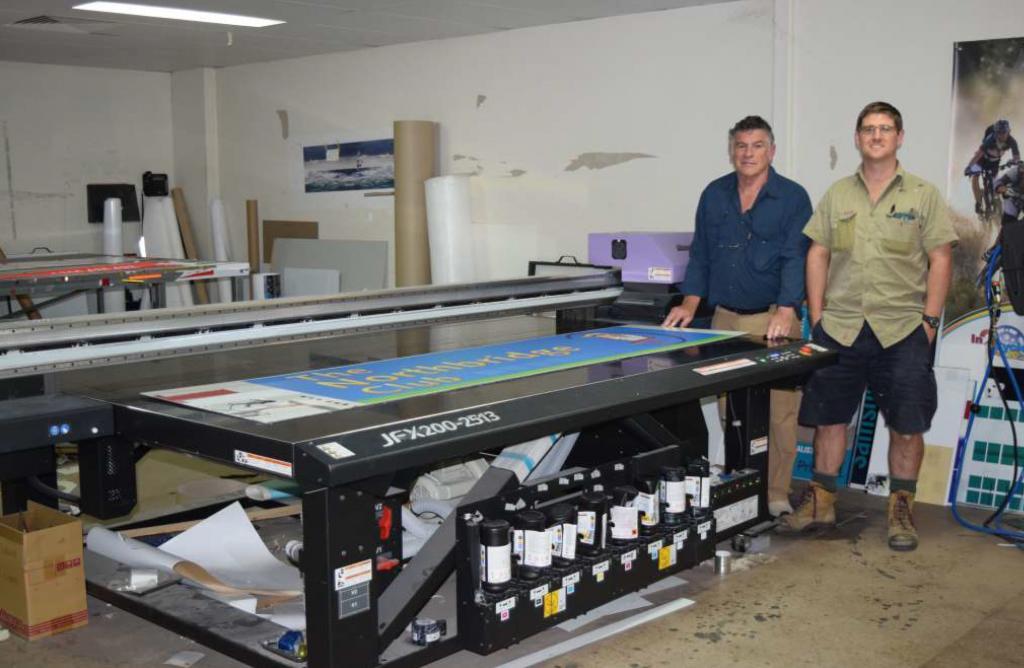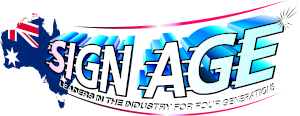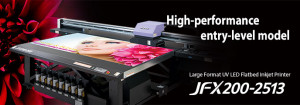Benefits of UV Flatbed printers
UV printers have been available for a few years, and as with all technology, there are constant improvements. Sign Age Queensland has recently purchased a Mimaki JFX 2090-2513 flatbed UV-LED printer – the first installed in the country. We are very excited about this new addition to our workshop. The benefits of this machine to the sign industry and ultimately the consumer are numerous.

What is a UV Printer?
Currently solvent ink printers are the mainstay of the digital printing world and while they produce a good product, they do have some distinct disadvantages. UV printers are at the forefront of printer technology and are a step above, providing outstanding digital images with a “pop” that is not available to solvent ink printers. The reason for this is the difference between the two printers. Solvent ink printers use a solvent based ink to print, which prints onto a roll of film and then this film is then adhered to the desired surface, for example acrylic or composite aluminium. Solvent ink printers have also become more widely available as their price has decreased, and are what is commonly used in most sign shops in the country and the world. UV printers, print directly onto the desired substrate, and will print on almost any substrate. The prints produced via this technology are produced using a polymer ink and therefore they produce a more durable product. The process for UV printing and the ink ensure that you don’t need to print onto porous materials as the ink is printed directly only the surface and it sits on the surface where the LED light cures the ink. (Nias, 2012) Led curing also has an added benefit compared to the UV printers that use mercury or metal halide lights for curing as you can print on heat sensitive material, without fear that the material will buckle or curl under the intense heat. (Steele, 2011) The Sign Builder Illustrated Magazine stated that “UV LED printers support a wide range of substrates-from PVC, leather, paper, and board stocks to foils, BOPP (Biaxially-Oriented Polypropylene), PE (polyethelene), and PET (polyethylene terephthalate) films.“(Antoniak, 2014)
Benefits of UV Led Printing
It offers little or no odour and it has enormous savings on energy consumption, therefore making it a greener alternative to sign manufacturer. (Steele, 2011) Led lights, have vastly lower energy consumption and last significantly longer than other types of bulbs, decreasing the need for costly replacement. (Steele, 2011) UV printers also have the benefit of having the colours of white or clear added to the CYMK colour range; these ensure a better coverage on colour materials and when printing in reverse. UV printers are changing the way we print on acrylic. This type of printer prints an image in reverse on acrylic that will give an almost 3D type effect to any image. UV printers also print at a finer level than solvent ink printers allowing you to print very small lettering which will remain clear and legible, this is due to the ability of the polymer ink to dry almost instantly.
UV printing provides an edge that was not readily available previously and it is a technology that has the ability to ensure that your sign or digitally printed image shines above the rest. The print produced via this type of printer is certainly nothing short of remarkable and has the ability to be another game changer in the sign industry. I would recommend that if you have the ability of have a look at a sample of an image printed from this style of printer you should have a look and compare the difference. This is certainly one of those times where the hype is certainly supported by the technology.
By Claire Cox
View information about our printer at the Mimaki website.
References.
Mimaki UJF-6042 UV printer targets high-quality market, Nias, Simon. Printweek (Oct 5, 2012): 12.
The ABCs of UV-LED (or) The EZ Approach to UV- LED Steele, Jeffrey, Wide – Format Imaging 19.11 (Nov 2011): 8-11.
Understanding UV LED Printing, Antoniak, Mike. Sign Builder Illustrated 28.225 (Mar 2014): 40,42,44-45.


